After he premiered in America, it was Also presented in Italy for 2022 Ford E-Transit, the electric version of the legendary light van of the Oval. And it is no coincidence that the second fully electric model brought to Europe is the Transit. Like Mustang Mach-E, E-Transit is the zero-emission evolution of a real myth. Based on the current Transit, Ford’s new electric van it exceeds 300 km of autonomy, offers lower running costs and the possibility of being a real generator… portable. Are you curious to find out all about him?
After almost 70 years, Ford Transit goes electric
Ford is now serious about electrification. How do we understand this? In that its longest-running and most iconic models are all going electric. There are in fact three pillars of the Dearborn House, with over 50 years of history behind it and a worldwide success. The first Ford model to go electric was the legendary Mustang, which in its Mach-E declination distorts the classic Mustang canon and evolves it to accommodate the tastes of modern customers. Since its launch in 1964, the fundamental stylistic canons and the desire to revolutionize the world of mobility have been pursued. And the success it is having on the market signals that it is the right way.
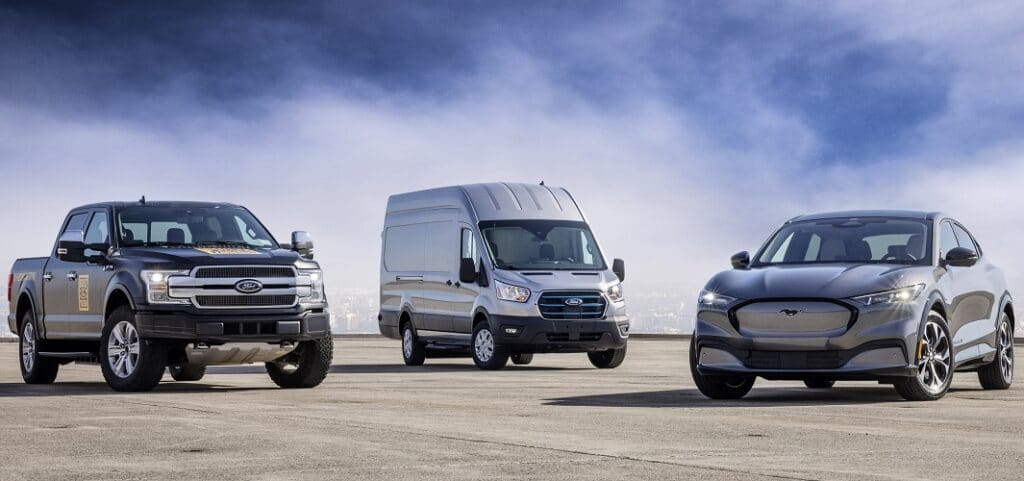
The second model to go electric is another giant in Ford history, the pickup F-150. Compared to him, the Mustang brand with its 57 years seems very young. The best-selling pickup truck in automotive history has been in continuous production since 1948. After 73 years, this year Ford launched the first version of the electric F-150, the Ford F-150 Lightning. And after two Ford motorsport icons in Stars and Stripes, it’s a “kid’s” turn 68 anni, Ford Transit. Ford E-Transit will follow a glorious history in 2022, born in 1953 and which saw Transit go from a small English Van to truly revolutionary model.
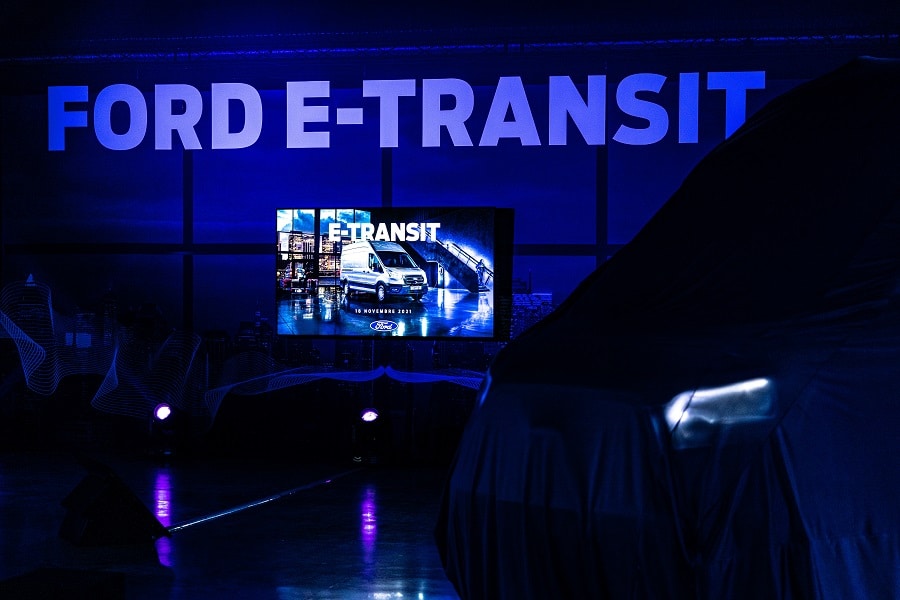
The first Van to bring the engine to the front in 1965, over the years it has become a real world phenomenon, resulting to date the best-selling van in the world. Today, after millions of units produced around the world, Ford Transit is ready to convert to electric. E-Transit’s debut is a very important step in the global strategy by Ford. The American House in fact wants make all its cars at least plug-in hybrid by 2024, and get 2/3 of electric registrations by 2030. This passage is also marked by the new ones Transit e Tourneo Connect Plug-In, we told you about this summer. If you want to know him better, find thededicated article at the bottom of the page.
From the outside, everything looks the same: scope, variants and aesthetics of the new E-Transit
Aesthetically, however, we would not say that there are big differences compared to the usual Transits. The bodywork in fact remains almost unchanged compared to the base Ford Transit van. Ford E-Transit 2022 is distinguished by one grille completely faired and equipped with blue strips. In addition, right in the center of the grille under the Ford logo we find the nozzle for charging, which we will talk about shortly.
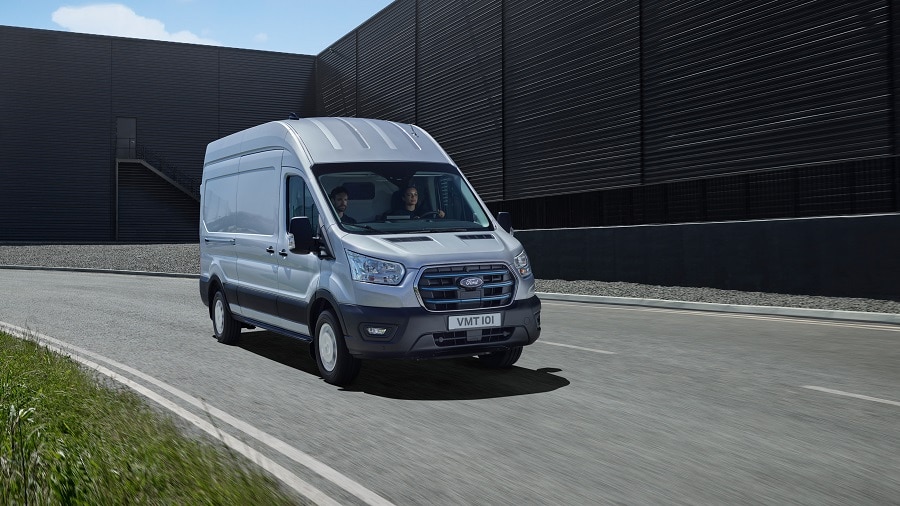
The differences on an aesthetic level as you can see are few, if not almost nil. In fact, Ford is keen to make it clear that this is not a Transit lite with which to do a few things, but it is a real pack mule to use for your work.. On a practical level, in fact, the only real difference with the traditional Transit is it greater thickness of the floor. Here, in fact, the lithium-ion batteries are housed to steal as little space as possible from the load. There cubature of the van versions fluctuates between 9.5 and 15.1 m3, while the scope remains remarkable. In fact, we are talking about a maximum of 1,758 kg in the Van versions, and up to 2,090 kg in chassis version.
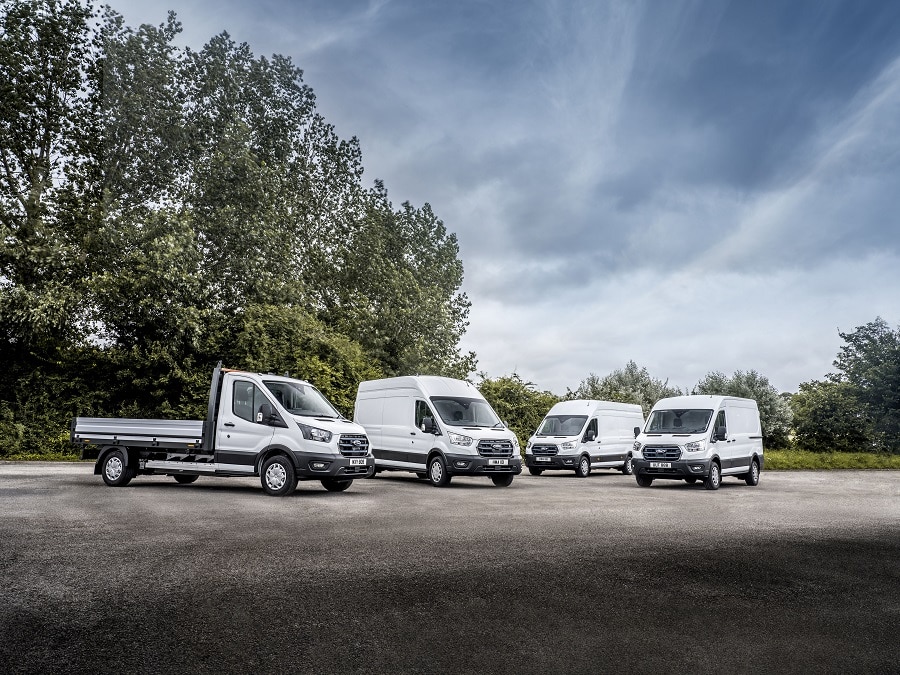
As you may have understood, Ford E-Transit does not do like some rivals, forcing you to choose between a couple of body variants in the electric version. On the contrary, you can opt for different body variants. At the time of purchase, the customer can choose between medium wheelbase, long wheelbase and chassis version, that is, equipped with a habitable cabin and open frame, perfect for applications such as tippers, tarpaulins or the like. In total, Ford E-Transit allows you to choose between 25 different variants, playing with the length of the wheelbase, the height of the roof, the total mass of 3.5 or 4.25 tons and the possibility of choosing the van variant, the double cab or the chassis cabs.
Inside, Ford E-Transit 2022 takes a leap into the future: Sync 4 and high-level technological equipment
But let’s jump aboard the Ford E-Transit which in 2022 will grant itself a substantial facelift in thepassenger compartment. First of all, for the first time on a Transit you see superior features. Available in one version only, the Trend, much more complete however, of the same name available for the diesel version. Ford E-Transit will have Keyless ignition, heated seats, electrically defrostable windshield and heated electric mirrors as standard. The real protagonist, however, is the 12-inch screen which houses the new infotainment system SYNC 4. Although it is positioned where the old SYNC was, the new fourth generation system has a very generous screen that develops in height, and at first glance differentiates E-Transit from the “normal” versions.
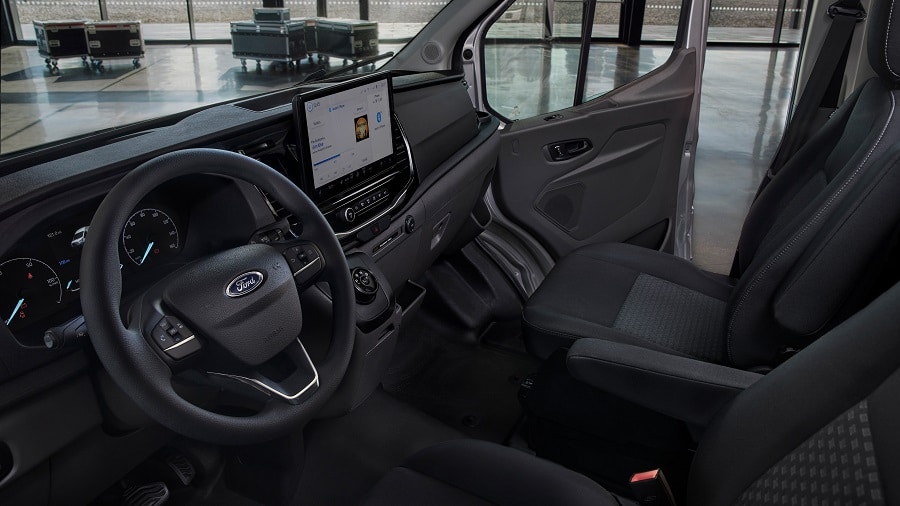
In addition, E-Transit inherits the latest version of the Ford operating system from Mustang Mach-E, second model of the House of the Oval to bring it to Europe. Equipped with an internal SIM for internet connection and connected services, SYNC 4 is standard equipped with voice commands and Amazon Alexa, is connected to the network and the screen is equipped with an anti-reflective glass and a shatterproof film. In addition, in the lower part of the dashboard we find the rotor for automatic gearbox, the only transmission available being electric, and of the robust and resistant materials. As we told you before, this E-Transit is not a walking version of the Ford van, but a true zero-emission work tool.
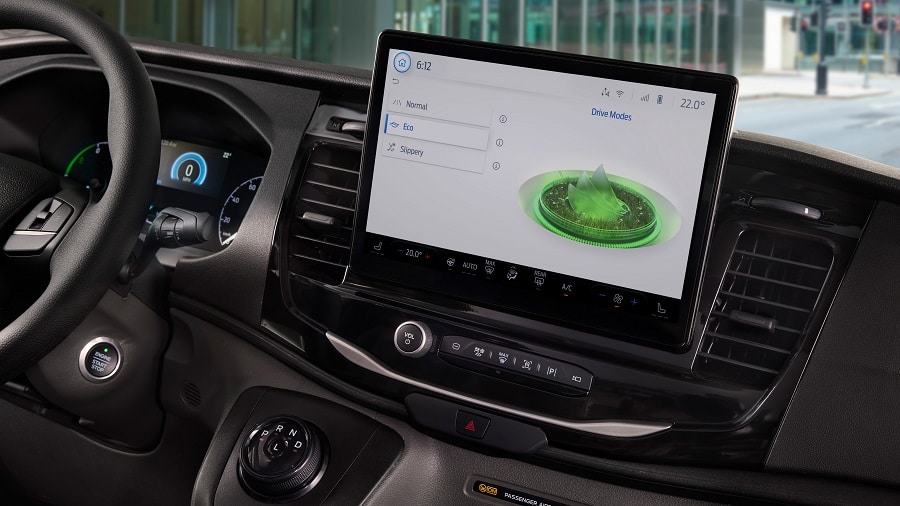
This SYNC 4 is also equipped with the ecosystem of Ford Power Up updates to add more and more features over the life of the van. An example? An update will arrive in the spring of 2022 that will make it possible pair two mobile phones to the system at the same time. There will also be some important safety systems, such as Cruise Control, automatic emergency braking with pedestrian detection, Lane Departure Warning, lane keeping assistant. But E-Transit also helps in maneuvers with automatic braking in reverse (very useful on box trucks) and the 360 ° camera system with front and rear parking sensors.
The mechanics of Ford E-Transit 2022: engine with 184 or 269 hp, up to 317 km and recharging up to 115 kWh
We get to talk about the mechanics Ford E-Transit 2022, which obviously does without the classic diesel engines to embrace the electric motor and lithium-ion batteries. The electric motor is capable of 430 Nm of torque available from 0 rpm, while customers can choose two power levels, 184 or 269 hp. The engine and also the performance remain almost the same, as well as the torque. At the end, the difference in power adapts to different needs, making one power more suitable for a given use than another. If, for example, you plan to use your E-Transit in the city, the 184hp version will do just fine. If you want to use it even outside the city, you can choose the 269 hp one. Obviously equipped with automatic transmission, Ford E-Transit also offers three, indeed four driving modes.
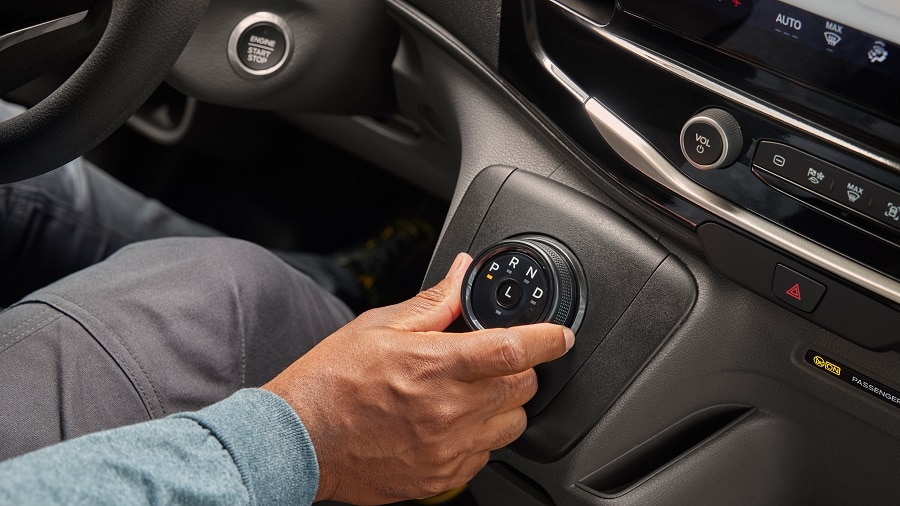
The driver can indeed choose between Eco, Normal, Slippery (to be used on wet or slippery asphalt to prevent the drive wheels from slipping) e Low. This mode, which can be activated via a button on the transmission selector, is equivalent to mode B view on other electric. The engine brake therefore increases and, consequently, energy recovery. There battery, as mentioned above, it is positioned as low as possible, so as not to steal space on the cargo floor. The accumulator has a capacity of 68 kWh, definitely good and right compromise between weight and autonomy. In fact, on a van one cannot “waste” precious kg to guarantee record autonomy, as the capacity would then drop to levels that are not very useful for the job. And in fact the autonomy is very good: both the 184 and 269 HP versions guarantee up to 317 km homologated in mixed cycle WLTP.
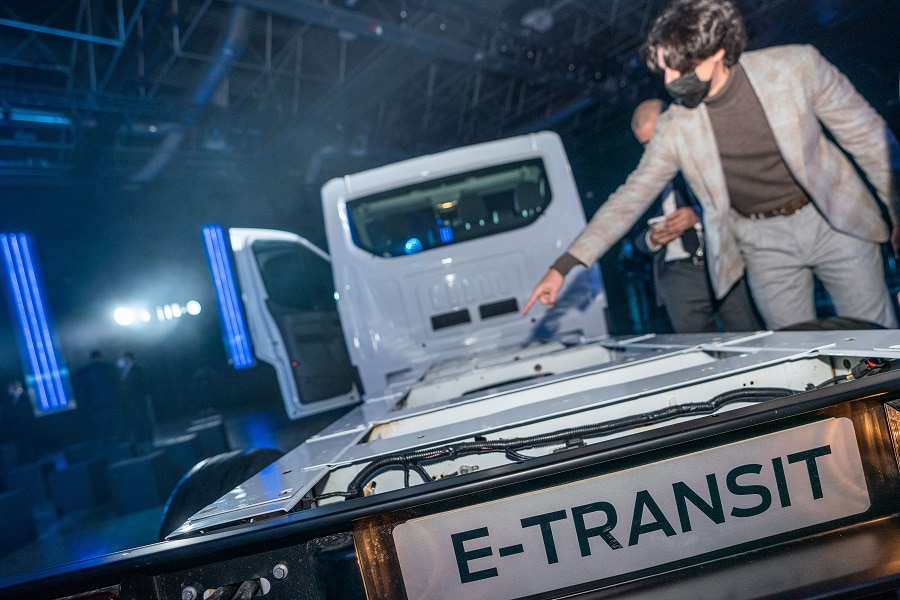
An interesting number, which according to Ford it is perfect for the professional use you expect for your EV van. According to the calculations of the Blue Oval, much of the industrial chain that Transit currently uses travels an average of 160 km per day and is subject to frequent stops in the company, where it is possible to recharge the battery. Also, there is always one very long night stop, which will allow a substantial recharge for the next day.
And speaking of charging, Ford E-Transit can charge at one maximum power of 115 kW at the Fast direct current columns. By harnessing this power, you can go from 15 to 80% in just 34 minutes. If you use a 7.4 kW three-phase power outlet (with a Wallbox or at the red industrial socket) serve 11 ore for a full charge from 0 to 100%. Finally, using a 11 kW column, full charging switches to 8,2 ore.
The revolution for work: ProPower Outlet, fleet management and reduction of management costs
Considering the nighttime idle time of a Van, using the classic 480V red industrial socket the time required for a full charge is less than the van’s idle time at night, which from 19 to 7 the following day is hardly used. Because of this, Ford believes that an electric van can be an interesting and affordable work vehicle. For the House of Dearborn, in fact, E-Transit is able to be more useful than a diesel van, to cost less and to be easier to manage.. In fact, according to his studies, Ford has calculated how the management and maintenance costs of an electric van allow save up to 40% compared to a diesel Transit. In addition, by recharging in the company i out-of-pocket refueling costs are significantly lower, allowing economic savings on almost all fronts.
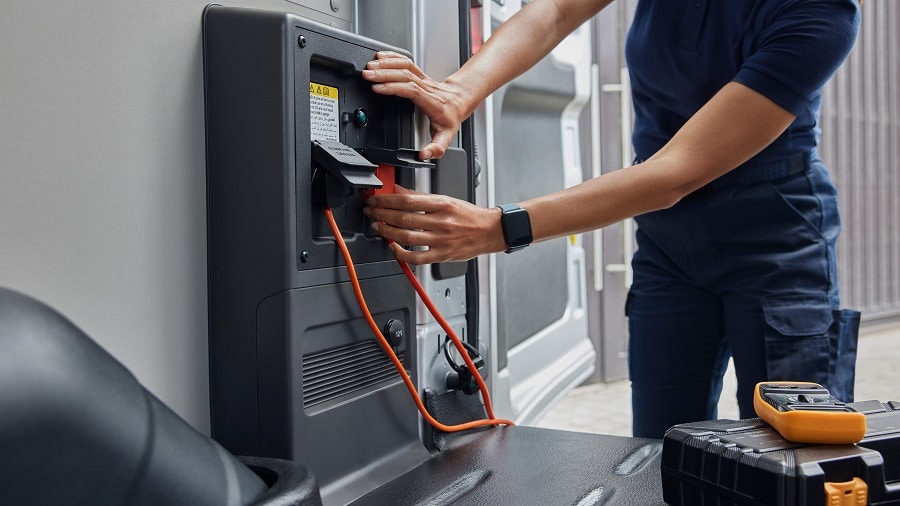
For those who fear maintenance, Ford has …
















Leave a Reply
View Comments